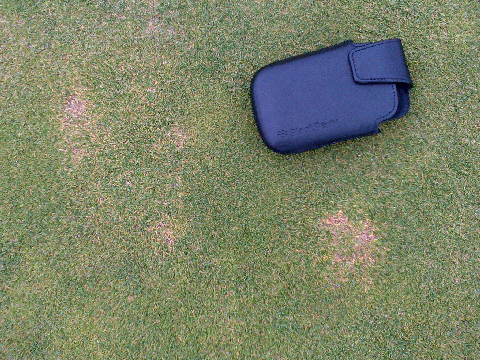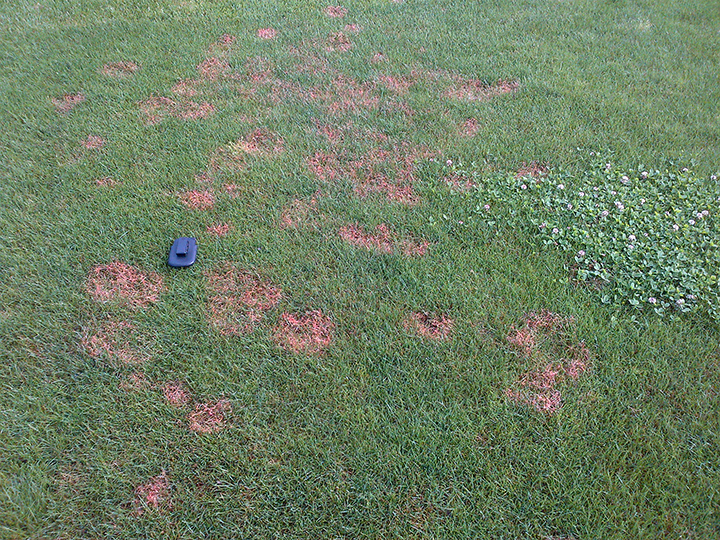-Dean Polk, Fruit IPM Agent and
David Schmitt, Eugene Rizio and Atanas Atanassov,
Program Associates, Tree Fruit IPM
- Grape
- Blueberry [Read more…]
Rutgers Cooperative Extension
-Dean Polk, Fruit IPM Agent and
David Schmitt, Eugene Rizio and Atanas Atanassov,
Program Associates, Tree Fruit IPM
The IR-4 Project is “a cooperative program of the USDA and the SAES, with the principle goal of developing data to support and to expedite regulatory clearances of newer, reduced risk pest control products for specialty crop growers.” More information on the IR-4 Project can be found at http://ir4.rutgers.edu. As the IR-4 liaison for the state of New Jersey, my main responsibility is to represent the pesticide needs of minor crops in New Jersey at the IR-4 Food Use Workshop meeting.
This year, the IR-4 Food Use Workshop will take place on Tues.-Wed., Sept. 11-12, at the St. Louis Union Station Marriott, downtown St. Louis, MO. New projects must be submitted no later than August 15. [Read more…]
-Kristian Holmstrom
Sweet Corn
European corn borer (ECB) adult catches have begun to increase again in some parts of the state. This is an indication that the second flight is starting. The most consistent catches at this time are in Salem and Cumberland counties, although low level catches are also being recorded in Morris and Burlington counties (see ECB Map). Plants are largely free of ECB injury at this time, but the situation will change within 2 weeks, as eggs are laid and larvae begin to feed. Consider treating if 12% or more plants exhibit the characteristic “shot-hole” type feeding on leaves and/or droppings or ECB larvae in emerging tassels. Remember to make a full-tassel application to control ECB larvae as they leave the tassel and travel down the stalk to re-enter the plant near the ear shank. This last application is often critical to controlling ear infestations from ECB. Consider weekly applications through the silk stage unless local corn earworm catches dictate a tighter schedule. This will help prevent ear infestations resulting from eggs laid on or near the developing ear.
The highest nightly ECB catches for the previous week are as follows:
| Shirley | 3 | Green Creek | 2 | Eldora | 1 |
| Burlington | 2 | Shiloh | 2 | Long Valley | 1 |
| Chester | 2 | Allentown | 1 | Morristown | 1 |
| Denville | 2 | Downer | 1 | Oldwick | 1 |
Corn earworm moth (CEW) catches are highly variable at this time. From lower Burlington County south, there are higher numbers, with particular hot-spots in Salem and Cumberland counties (see CEW Map). Pheromone catches near the Camden/Atlantic County border, as well as Salem and Cumberland counties have increased significantly over the past week as well. These moths are a threat to the sweet corn plantings now in the silk stage. As silks begin to appear, pay close attention to CEW catches in local blacklight traps, and treat silking plantings accordingly. Begin silk spray schedules as close to first silk as possible.
The highest nightly CEW catches for the previous week are as follows:
| Centerton | 5 | Downer | 2 | Hammonton | 1 |
| Woodstown | 5 | Indian Mills | 2 | Medford | 1 |
| Cedarville | 3 | Shiloh | 2 | Pedricktown | 1 |
| Jones Island | 3 | Tabernacle | 2 | Shirley | 1 |
Silking Spray Schedules*
South – 3-4 days
Central – 5-6 days
North – 6-7 days
* Note: These are general recommendations. Local trap catches may indicate some variation in the frequency of insecticide applications to silking corn.
Peppers
With the beginning of the second ECB flight, it is a good idea to scout fields at least weekly for the presence of ECB eggs. If 2 or more eggmasses are found in a 50 plant sample (2 leaves/plant), a foliar insecticide application should be considered. Generally, where blacklight trap catches average one or more ECB per night (shaded and crosshatched areas on the map, and blue and green areas on the web version, found at: http://www.pestmanagement.rutgers.edu/IPM/ Vegetable/Pest%20Maps/maparchive.htm) and fruit are greater than ½” in diameter, insecticides are warranted. See the 2012 Commercial Vegetable Production Recommendations for materials useful in controlling ECB. Beet armyworm (BAW) larval populations have been found on various crops in southern NJ. This pest is typically a threat to peppers, and as new plantings become established, growers should be on the alert for this pest. BAW larvae feed on leaves near the growing points on plants. This feeding can result in significant defoliation and ultimately fruit damage, as the larvae begin to feed there as they grow. BAW is another of our southern invaders that has shown up much earlier than expected. Like FAW, BAW can be difficult to control with older materials. See the 2012 Commercial Vegetable Production Recommendations for newer materials useful in controlling BAW.
Brown Marmorated Stinkbug (BMSB)
BMSB adult catches are still low in most blacklight traps, although numbers have been increasing gradually over the past two weeks or so. At present, the only trap averaging more than 5 BMSB/night is near Shirley in Cumberland County (see BMSB map). BMSB has shown a preference for peppers in the past. Growers should pay close attention to activity from local traps to determine when to initiate field monitoring of this pest.
The highest nightly BMSB catches for the previous week are as follows:
| Shirley | 15 | Jones Island | 4 | Indian Mills | 3 |
| Denville | 5 | Morristown | 4 | Oldwick | 3 |
| Green Creek | 5 | Flanders | 3 | Shiloh | 3 |
| Hammonton | 4 | Folsom | 3 | Oxford | 3 |
Tomatoes
With prolonged hot, dry weather, thrips have begun to increase in a number of scouted tomato fields. Flower thrips may be found by tapping upper level fresh flower clusters over an index card. This should be done at least once a week. If there is a sharp increase in the number
of flower clusters having thrips, consider an insecticide to suppress their numbers. These insects can cause a golden colored “fleck” to the surface of fruit. This injury is largely cosmetic, but can result in unmarketable fruit. Generally, if thrips are found in less than 50% of flower clusters, the threat is low. However, if multiple thrips are found in more than half of the samples, and numbers have increased, an insecticide may be warranted. See the 2012 Commercial Vegetable Production Recommendations for newer materials useful in controlling flower thrips.
Up Coming Events:
Register on-line (or print registration form) for Field Days at www.njturfgrass.org.
Early registration discount for both field days ends on July 13th.
Turf Specialist, Jim Murphy talks about what’s happening out in the field on the new
Rutgers Turf Blog.
 |
Good cultural management practices can help reduce the severity of Anthracnose basal rot.Read more > |
 |
Most people begin to notice crabgrass in turf around the 4th of July. At that time, the crabgrass plants are large enough that the leaves stick-up above the desired grasses and the lighter, yellow-green color is highly noticeable from a distance.Read more > |
 |
Red thread disease tends to be more aggressive in full sun than shade and it often appears where soil fertility and organic matter are low.Read more > |
Disease Control Recommendations for Ornamental Crops by Ann Brooks Gould, Ph.D. is a comprehensive summary of pesticides currently labeled for ornamental disease control in New Jersey.
The guide is intended for use by industry professionals (arborists, growers of greenhouse crops, nursery crops, or Christmas trees, and personnel who manage various indoor and outdoor landscapes) for disease management of ornamental crops. This guide is not intended for use by homeowners. Publication E036, available at your County Extension Office or http://njaes.rutgers.edu/pubs/publication.asp?pid=E036.
Cooperating Agencies: Rutgers, The State University of New Jersey, U.S. Department of Agriculture, and Boards of County Commissioners. Rutgers Cooperative Extension, a unit of the Rutgers New Jersey Agricultural Experiment Station, is an equal opportunity program provider and employer.
Rutgers University is an equal access/equal opportunity institution. Individuals with disabilities are encouraged to direct suggestions, comments, or complaints concerning any accessibility issues with Rutgers web sites to: accessibility@rutgers.edu or complete the Report Accessibility Barrier or Provide Feedback Form.
Copyright © Rutgers, The State University of New Jersey, an equal opportunity, affirmative action institution
Copyright © 2025 · Generate Child Theme on Genesis Framework · WordPress · Log in